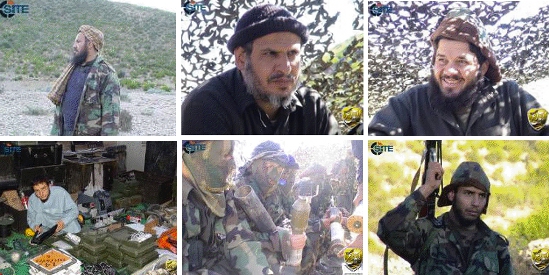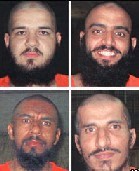A Shabaab suicide bomber killed nine Somalis today in an attack outside a hotel in Mogadishu. From Reuters:
Shabaab has carried out more than 30 major suicide attacks in Somalia since September 2006, when its predecessor, the Islamic Courts Union, usurped control of the government (the Islamic Courts was ousted from power in an invasion by Ethiopian forces in December 2006). Several of the attacks have been carried out by American and British citizens who had left their home countries to join Shabaab.
Shabaab has also executed one suicide attack outside Somalia. A double suicide bombing on July 11, 2010 in Kampala, Uganda, killed 74 people. The suicide cell that carried out the attack, the Saleh ali Nabhan Brigade, is named after the al Qaeda leader who served as Shabaab's military commander before he was killed in a US special operations raid in September 2009.
A suicide car bomber killed at least nine people Wednesday near a hotel where lawmakers often gather in the Somali capital Mogadishu, police said. Police officer Hassan Ali told Reuters the attacker rammed his vehicle into a cafe by the Hotel Muna, which was also stormed by al Shabaab militants in August 2010 in an attack that killed more than 30 people.The Aug. 24, 2010 suicide assault on the Hotel Muna was a particularly brazen effort by Shabaab, and was one of several in which Shabaab used a complex attack to target Somali officials. Shabaab has emulated the tactics of other al Qaeda affiliates and allies, including al Qaeda in the Arabian Peninsula, al Qaeda in the Islamic Maghreb, al Qaeda in Iraq, and the Afghan and Pakistani Taliban.
"So far we have carried nine dead civilians and 34 others injured. Up to now we have not seen casualties of any legislators. The death toll may rise," said Ali.
Police and the spokesman for African Union troops in Somalia said initial reports showed that the attacker first opened fire on people sitting near the hotel before detonating the car.
Shabaab has carried out more than 30 major suicide attacks in Somalia since September 2006, when its predecessor, the Islamic Courts Union, usurped control of the government (the Islamic Courts was ousted from power in an invasion by Ethiopian forces in December 2006). Several of the attacks have been carried out by American and British citizens who had left their home countries to join Shabaab.
Shabaab has also executed one suicide attack outside Somalia. A double suicide bombing on July 11, 2010 in Kampala, Uganda, killed 74 people. The suicide cell that carried out the attack, the Saleh ali Nabhan Brigade, is named after the al Qaeda leader who served as Shabaab's military commander before he was killed in a US special operations raid in September 2009.
Read more: http://www.longwarjournal.org/threat-matrix/archives/2012/02/suicide_bomber_kills_9_in_moga.php?utm_source=twitterfeed&utm_medium=twitter#ixzz1lpG3paa9




















 Washington Time
Washington Time Kabul Time
Kabul Time London Time
London Time







